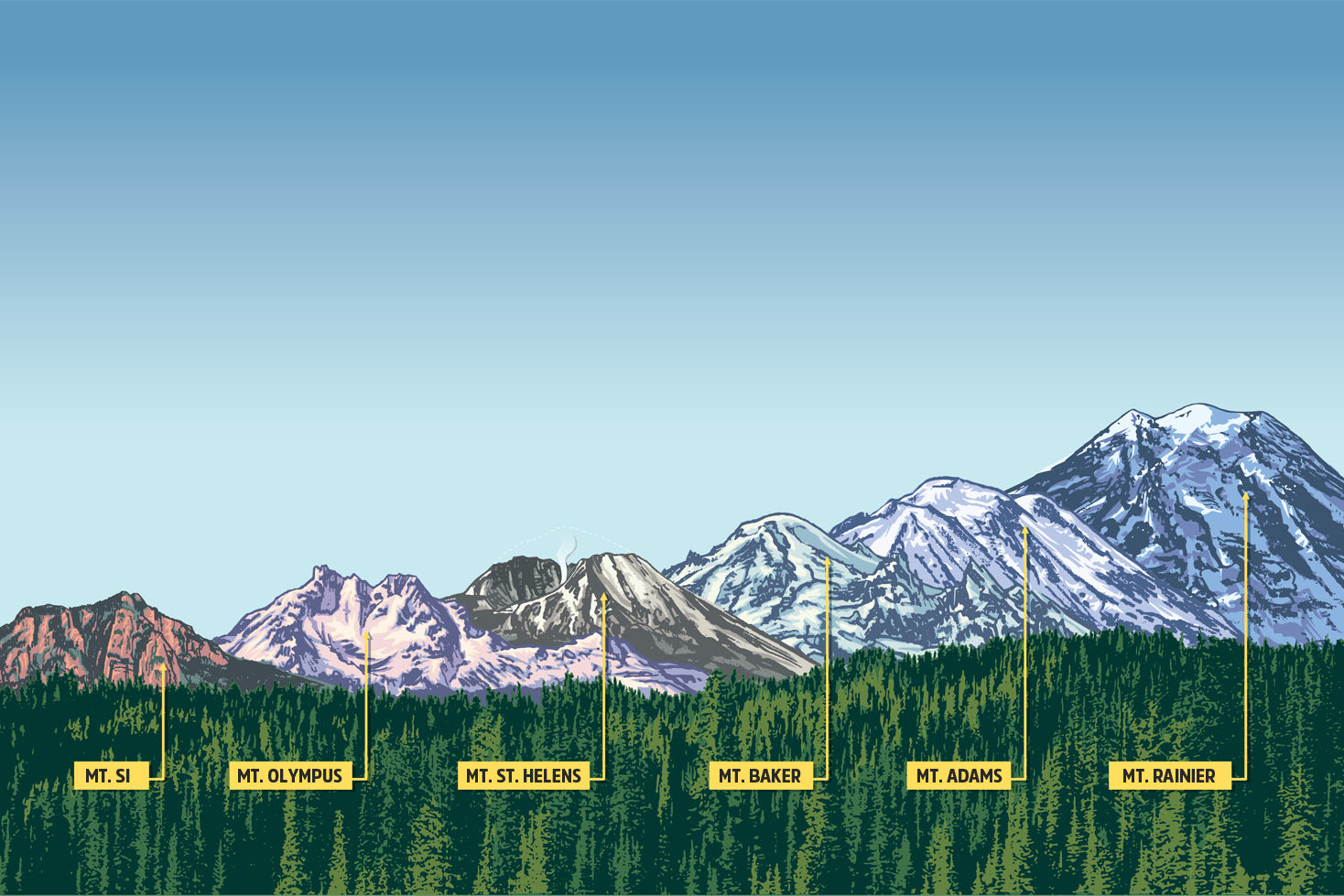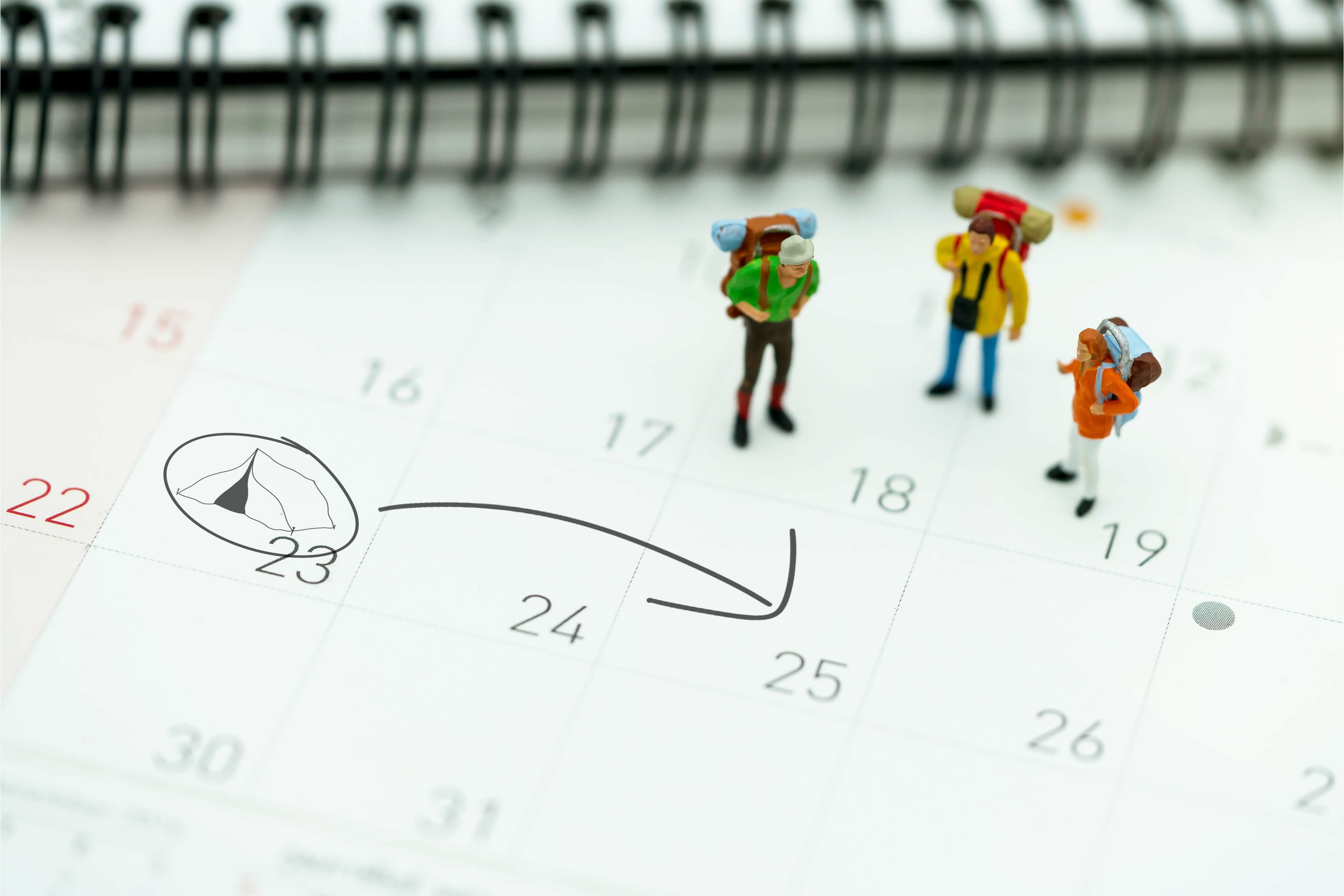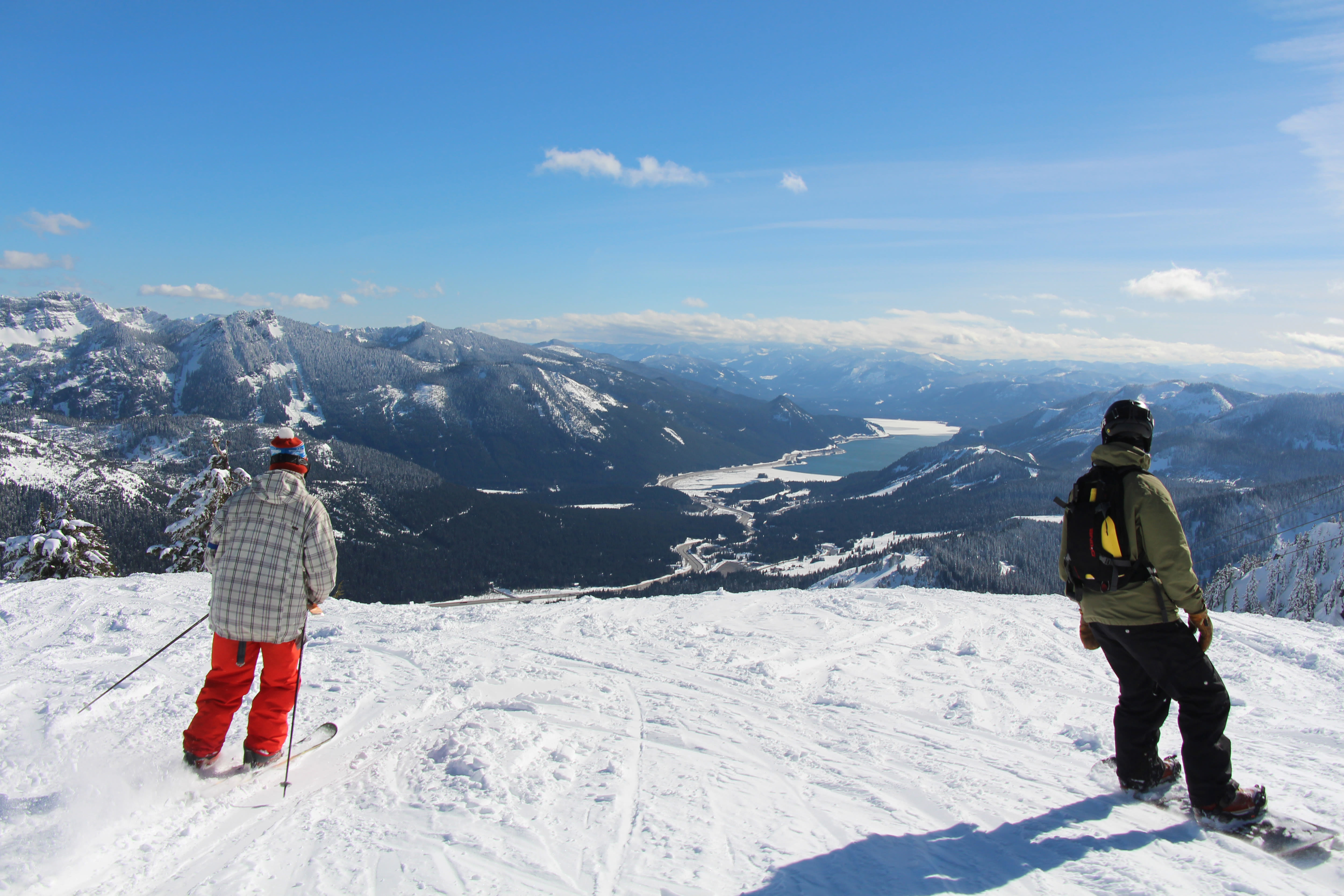
Washington's 6 Signature Mountains Are Waiting
Mt. Si
4,167 feet
Named After Josiah “Uncle Si” Merritt, a homesteader who lived at the base in the nineteenth century, but most famous for its starring role in the Twin Peaks credit sequence
Found Just over a half hour from Seattle, the North Bend’s massif is a hugely popular destination for day hikers. You’ll need a Discover Pass ($30 annually) and your stars in alignment to score a parking spot.
Conquer Ascending Si takes little more than a few hours, moderate fitness, and a granola bar, but the final scramble up a rocky pile is optional—much more dangerous than the gentle hike that precedes it.
Mt. Olympus
7,980 feet
Named By explorer John Meares, who thought the mountain looked like the home of the Greek gods
Found Rising from the center of the mountain range and peninsula both named after it. The Olympics are noted for rain forests and surly mountain goats, plus the elk herds that endeared them to onetime fan Teddy Roosevelt.
Conquer Though the peak is relatively puny in stature, Olympic glory comes only after crossing glaciers, climbing rock, and slogging 17.5 foot-numbing miles just to reach base camp. The ambitious do it in three days, while guided climbs (starting around $1,200) take the better part of a week.
Mt. St. Helens
8,365 feet
Named By explorer George Vancouver, for the 1st Baron St Helens, Alleyne FitzHerbert. The Cowlitz tribe, knowing her penchant for blowing up, called her Lawetlat’la, or “the smoker.”
Found On the east side of the Cascades, about 50 miles northeast of Portland. You’ll know her by the mile-wide crater formed by the May 18, 1980, eruption that killed 57.
Conquer Once the snow melts, block out eight to 12 hours and bring good ankle support to clamber over boulders on the most popular route to the crater rim. In winter bring traction or skis, and on Mother’s Day climbers wear dresses; it’s tradition. Permits ($22) are required April 1 through October 31.
Mt. Baker
10,781 feet
Named Somewhat boringly after a third lieutenant on George Vancouver’s ship Discovery. Its earlier names are much cooler: Koma Kulshan or “great white watcher” by Native Americans and La Gran Montaña del Carmelo by the Spanish.
Found On the very northern end of Washington’s Cascade range, almost in Canada, and so close to Bellingham that its adjacent ski area is a Western Washington University favorite
Conquer Serious mountaineering skills are required to top Baker, though routes from the northwest (the Coleman-Deming route) and south (Easton Glacier) are popular on summer weekends; guiding starts at $850 from mountainguides.com but most folks go alone. Climbers usually camp halfway up the mountain and summit around sunrise to minimize avalanche risk.
Mt. Adams
12,276 feet
Named When a rather hapless explorer tried to rename the Cascades after presidents; he meant to give John Adams’s name to Oregon’s Mount Hood. (Whoops.) Native Americans called it Klickitat.
Found East of St. Helens and halfway in the Yakama Indian Reservation, the peak is lesser known but still an active volcano that last erupted a mere 1,000 years ago.
Conquer Adams’s glaciers are almost gone, shrinking by half in the last century, so the most popular route up the state’s second-tallest mountain is actually nontechnical—no ropes needed, just a permit ($10 to $15). Most people take two days, camping overnight at the 9,500-foot flat Lunch Counter before a morning summit push and then glissading (i.e., butt sliding while screaming in terror and glee) all the way down.
Mt. Rainier
14,410 feet
Named After the beer. Kidding—Vancouver used the name of his buddy Rear Admiral Peter Rainier, who fought in the Revolutionary War. For the British side. One Puyallup tribal activist lobbied in 2010 to return it to its local name, Ti’Swaq, and previous campaigns have tried for Mount Tacoma or Tahoma.
Found On every state license plate and postcard. Any day the clouds clear, you probably gaze 60 miles southeast of Seattle and sigh.
Conquer Three guide companies offer regular trips up Rainier ($1,026 to $2,165), and countless other organizations do charity-themed ascents. Still more climbers attempt it independently (climbing pass $45), but there’s a reason the most popular route is named after the rocky Disappointment Cleaver—half the comers turn around before the top. Glacier skills are required for the two- to three-day attempts at glory.




